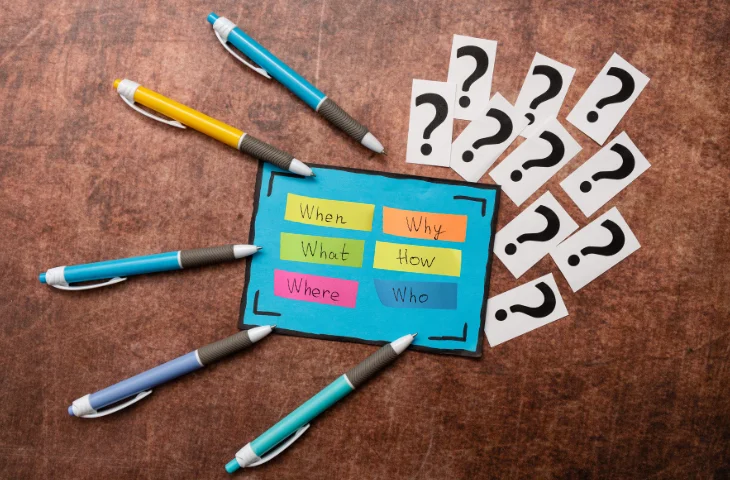Puzzle is a major part of the reasoning section, especially for bank exams, where most of the questions in both Prelims and Mains are from puzzles. There are various types and forms of puzzle reasoning questions that are asked in the examination, and each type has some short trick that can be used to solve these questions quickly.
In this blog, we have provided all the details about the types of questions asked in the exam, along with key concepts, short tricks, and tips to solve them effectively.
What Is Puzzle in Reasoning?
Puzzle reasoning questions involve logical arrangement, sequencing, or classification of data to arrive at a conclusion. These questions are designed to test a candidate’s analytical thinking, data interpretation, and problem-solving skills.
They appear frequently in competitive exams because they evaluate how well a candidate can decode complex scenarios in limited time. Most puzzles are verbal-logical and require structured visualization.
Skills Required:
- Logical deduction
- Visualization of data
- Sequential arrangement
- Analytical mapping
Why Is Puzzle an Important Topic in Competitive Exams?
Puzzle is an important topic in competitive exams, as a significant number of questions are asked from this section. It helps the examiner assess the aspirant’s level of patience and problem-solving skills.
The approximate number of questions asked from the puzzle topic in various examinations is as follows:
| Exam | No. of Questions | Difficulty |
| SSC CGL / CHSL | 2-3 | Easy |
| IBPS PO / SBI PO | 9-10 | Moderate/ Difficult |
| RRB NTPC / Group D | 1 | Easy |
| State PSC / Police | 1–2 | Moderate |
Puzzle questions are time-consuming but high-scoring if approached correctly.
Types of Puzzle Reasoning Questions
There are various types of puzzle reasoning questions that are asked in the examination. The details of the types of questions asked are as follows:
| Type | Description |
| Linear Puzzle | Arrangement in a single line (left to right or front to back) |
| Circular Puzzle | Seating or arrangement in a circle, inward or outward facing |
| Floor-Based Puzzle | Persons living on different floors of a building |
| Tabular Puzzle | Based on tabular data with multiple attributes |
| Box Puzzle | Stacking or ordering boxes with color/names/etc. |
| Blood Relation Puzzle | Family tree-based reasoning combined with arrangement |
| Date/Month Puzzle | Based on birthday dates, months, or years |
Key Concepts of Puzzle Reasoning Questions
Key concepts for each type of reasoning question are different. The details of the types of questions and the various concepts to be followed for each are as follows:
| Concept | Explanation |
| Linear Arrangement | People/items arranged in a single row/line |
| Circular Arrangement | Based on inward/outward-facing direction logic |
| Floor Puzzle | Assign people/factors to different floors |
| Tabular Puzzle | Uses a table to organize multiple attributes |
| Conditional Clues | Data that indirectly links two or more entities |
| Fixed Position Clues | Data giving exact positions or relative placements |
What Are the Various Forms of Puzzle Questions in Reasoning?
Puzzle reasoning questions can be of various forms. The details of the different forms of puzzle reasoning questions are as follows:
- Linear Puzzle – Single row or two-row arrangement
- Circular Puzzle – Round table logic, facing inward or outward
- Floor Puzzle – Persons living on different floors
- Box Puzzle – Order or stacking of boxes based on clues
- Tabular Puzzle – Data based on multiple categories (color, city, job)
- Coded Puzzle – Uses symbols or logical operations in arrangement
- Mixed Puzzle – Involves 2–3 reasoning types in one question
Puzzle Formulas for Reasoning
While puzzles don’t follow traditional math formulas, here are some commonly used logical formulas:
- Start with fixed clues → Any clue with “exactly”, “immediate”, “only”
- Draw vertical/horizontal grids → Helps visualize floor/tabular puzzles
- Use elimination method → Cross out wrong options as you proceed
- Arrow Technique → For direction or order-based logic
- Block assignment → Allocate groups together if mentioned
Puzzle Tricks for SSC CGL and Other Exams
Some of the tricks to solve puzzle reasoning questions are as follows:
- Start solving from direct/fixed clues
- Always draw a base diagram line, grid, or circle
- Eliminate options using definite negatives
- Break clues into smaller parts for easier mapping
- Track “who cannot be where” to cut down possibilities
- Recheck compatibility of each assumption
- In circular puzzles, mark direction clearly inward vs. outward
- Don’t assume stick to only what’s given
- In floor puzzles, work from top or bottom as per the clues
- Time yourself while practicing to improve accuracy
Solved Puzzle Questions from 2024–25 Exams
1. Asked in SSC CGL 2024 Tier 1 Shift 2 – Memory-Based
Six people A, B, C, D, E, and F are sitting in a row facing north. C is to the immediate right of D. Only one person sits between A and B. A is not at an extreme end. Who is sitting at the left end?
Answer: E
Explanation: Use fixed clues and create the arrangement step-by-step.
2. From IBPS PO Prelims 2024 – Oliveboard Mock
Seven persons live on seven different floors of a building. G lives on an odd-numbered floor above C. D lives immediately above F. Only one person lives between B and G. Who lives on the top floor?
Answer: B
Explanation: Assign floor numbers 1 to 7, start from “D above F” and place each clue accordingly.
3. Based on Memory – RRB NTPC 2024 CBT-1
Five boxes A, B, C, D, and E are stacked. C is above D and below B. A is above E and below B. Which box is at the top?
Answer: B
Explanation: Map each box based on position clues.
Puzzle Concepts for Bank Exams
In banking exams like IBPS PO or SBI PO, puzzles tend to be multi-layered with coded or hybrid clues. You may get:
- Coded Circular Puzzle: Inward/Outward direction with conditional clues
- Variable-based Floor Puzzle: Names, jobs, and cities mixed with floor numbers
- Calendar-based Puzzle: Combining dates and schedules
Example:
Eight persons attend meetings in four different months. Each meeting is on either the 13th or 22nd. Who attends in July 22nd?
Solve by drawing a Month-Date matrix and fill based on conditions.
Common Mistakes to Avoid while Solving Puzzle
While solving Puzzle reasoning questions, candidates must keep the below mentioned details in mind:
- Jumping to conclusions without drawing layouts
- Ignoring indirect clues that affect later steps
- Misinterpreting direction (left/right or upward/downward)
- Not tracking already placed data
- Rushing through questions under time pressure without verifying
What Are Related Topics I Should Revise Next?
Topics you should revise next are as follows:
- Questions based on Floor Based Puzzle
- Rules and Practice Questions of Coding-Decoding
- Shortcuts and Patterns of Syllogism
- Various types of Blood Relations Questions
- Tricks & Examples of Seating Arrangement
FAQs
The major types include Linear Arrangement, Circular Arrangement, Floor-based Puzzle, Tabular Puzzle, Box Puzzle, and Mixed Puzzles. Each type requires specific strategy and visualization.
Start with direct or fixed clues, use diagrams/tables to visualize, avoid assumptions, and use the elimination method to reduce complexity.
Mark facing direction first. Then apply left/right logic carefully based on whether the person is facing inward (normal) or outward (reversed).
Assign numbers to floors (top = highest) and place known elements. Use elimination for uncertain placements. Clues like “above”, “immediately below” help to fix positions.
Use a grid or table to match categories. Track each attribute’s placement based on the clues.
- OICL AO Cut Off 2025, Previous Year Prelims and Mains Marks
- OICL AO Notification 2025 Out, 300 Posts, Application Link
- OICL AO Salary 2025, Complete Salary Structure, and Job Profile
- IBPS SO Interview Questions and Answers, Check Details
- How to Prepare for the IBPS SO Law Interview 2025-26? Complete Guide
- How to Prepare for the IBPS SO Marketing Interview? Complete Guide

Hello there! I’m a dedicated Government Job aspirant turned passionate writer & content marketer. My blogs are a one-stop destination for accurate and comprehensive information on exams like Regulatory Bodies, Banking, SSC, State PSCs, and more. I’m on a mission to provide you with all the details you need, conveniently in one place. When I’m not writing and marketing, you’ll find me happily experimenting in the kitchen, cooking up delightful treats. Join me on this journey of knowledge and flavors!
